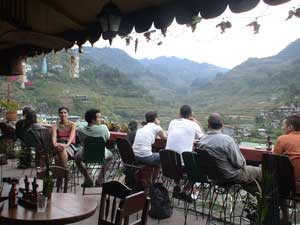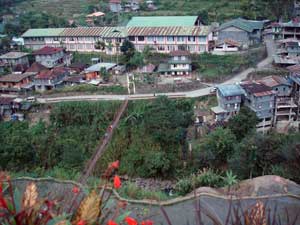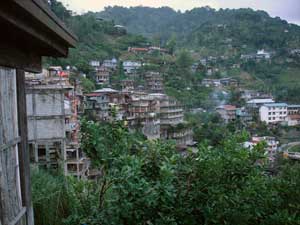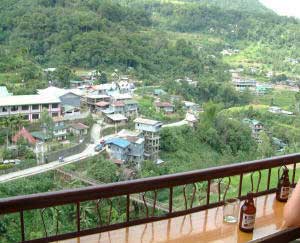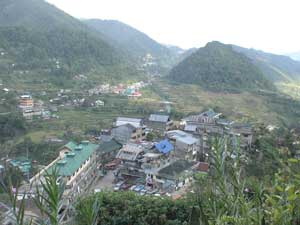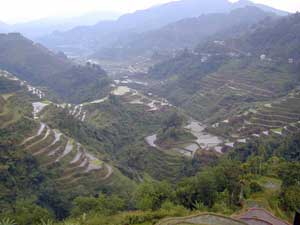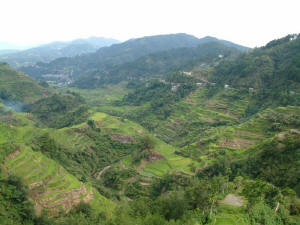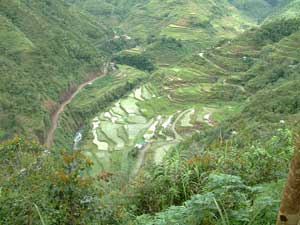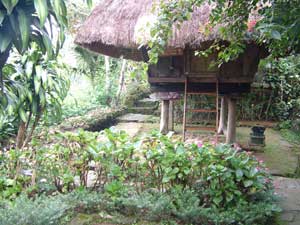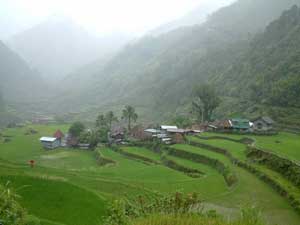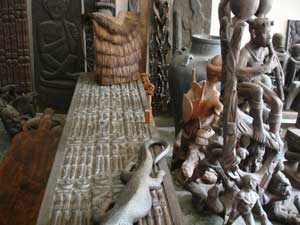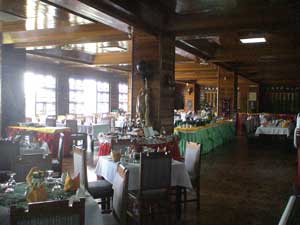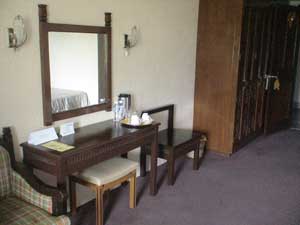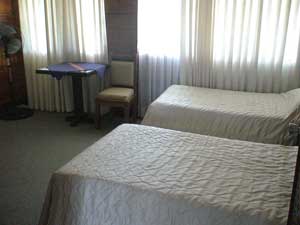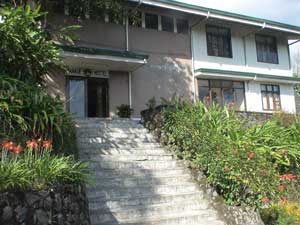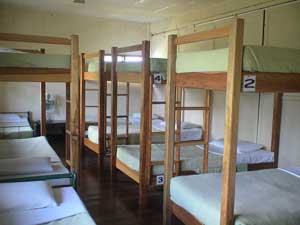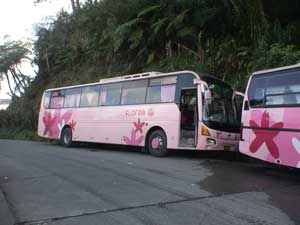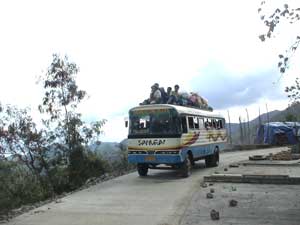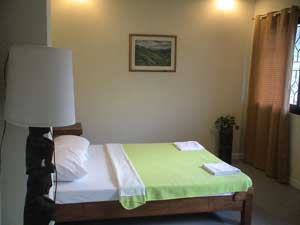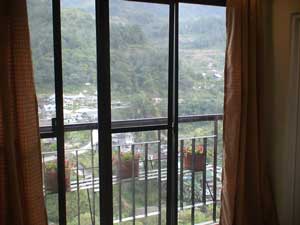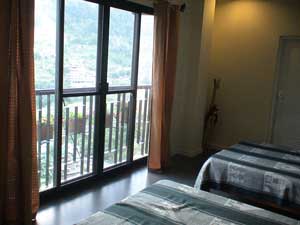
A Travel Guide for Banaue and the Ifugao Rice Terraces
Updated March 16, 2012
Banaue is the gateway to the UNESCO World Heritage listed Ifugao rice terraces of Northern Luzon. The Banaue environs are visually beautiful, high in the mountains, sometimes shrouded in mist and cool rain. The rice terraces are a fabulous testament to the inspired agricultural engineering of the Ifugao people. Some of these terraces were constructed 2000 plus years ago, and all are still in use today.
The best time to go is between February and May end, when it is least likely that the views will be obscured by low level clouds.
Tourists come here to enjoy the scenery, to gaze at it from one of the many view points, to trek through it, or to wake up in it. I remember how awed I was by the scale of these rice terraces on my first visit some 10 years ago. I have been to or through Banaue more than 50 times since and often take the scenery for granted now. For me, the pleasure of visiting Banaue is staying in Batad or Bangaan, and waking up in the morning with the view of the terraces through my window – this I can’t tire of. My last visit to Banaue and Batad was in January 2010. For more information about Batad, see my Batad Travel and Accommodation Guide
I don’t particularly like the town of Banaue, and only stay there for an occasional overnight. The town center is ramshackle and ugly, like most towns in the Philippines, but fortunately it is only a tiny blot on this vast landscape. If your time is limited, as is often the case with Filipino tourists or Manila based expats, then the centrality of Banaue makes it a good base while taking in as many sights as possible, especially if you don’t have your own transport.
A walk down the road along the valley is a nice thing to do, just for the fresh air and great views of the tangle of buildings along the main road. On the way back to town, brave the swing bridge.
UNESCO describes the Banaue Rice Terraces thus “The Ifugao Rice Terraces epitomize the absolute blending of the physical, socio-cultural, economic, religious, and political environment. Indeed, it is a living cultural landscape of unparalleled beauty.” This culture that built and maintained the terraces is rapidly disintegrating though, and in 2001, the Ifugao rice terraces were put on the “List of World Heritage in Danger”. As can be expected, the newer generations of Ifugao’s do not aspire to the toil and hard labor of their ancestors. As a consequence, many of the narrower and low-productive terraces are falling into disrepair. In the future, more and more of the upkeep will be carried out by contract laborers, probably from tourism funding, or the terraces may collapse like a house of cards. Have a look at how narrow some of the terraces are and then imagine how little produce could come from such a tiny strip of land; weigh that up against the amount of backbreaking work required for such a miniscule return. For now the terraces are still in pretty good shape, and you won’t be disappointed with what you see.
The Ifugao people were a fierce race. Tribal wars were common and headhunting expeditions between warring tribes were commonplace in years past. Their history has produced a super strong, proud people, quite different in appearance to other provincial peoples - shorter, muscular from a very young age, darker skin tone and broader features. Occasionally one may see an old man or woman in traditional loincloth or tapis shopping at the local market, but for younger people this clothing is reserved for traditional celebrations. Some elders wear the tapis, etc. for photo opportunities with tourists, and for which it is a courtesy to pay – maybe P20 pesos each to the people in this photograph.
There is no land ownership around the terraces as such, but only the right to till, plant, harvest and maintain their family plots. Once the family ceases to do this, ‘ownership’ of the land passes to another, be it a neighboring farmer or relative of the original ‘owners’.
Restaurants – Places to Eat with a View in Banaue Town Center
One thing that you will definitely want to do in Banaue, is have a meal or drink while enjoying a great view.
Sanafe Lodge and Restaurant
They have best and largest view deck and this is a great place to have a beer, or any other drink. From their verandah restaurant, there is a panoramic view of the local rice terraces dotted with structure ranging from native huts to absurd looking buildings more suited to a Disneyland theme park. Sanafe’s food is disappointing and their service worse. Order drinks in advance before you need them, and eat somewhere else.
People’s Lodge and Restaurant
Their view deck is a narrow verandah which can seat about 10 people, but it is a squeeze to get in and out. There are many more tables inside. The verandah is certainly a nice place to sit and have a beer or a meal. The view is almost the same as that which you will see from Sanafe. The service is a bit slow but the food is OK - I have eaten here countless times.
Uyami’s Green View Lodge
Their food is great and so is the service. There is no verandah so the view can only be enjoyed by looking out through the window. Some of the meals I had here in January 2010 were Tinolang Manok with rice (chicken cuts with vegetables in a ginger flavored soup) – P110; curry and rice - P80; sauteed leafy vegetables - P50; all very delicious.
Accommodation
The peak season is the Christmas/New year period and the Easter week (holy week) and some guest houses may charge more over those two weeks – ask when you book.
People’s Lodge and Restaurant
It is located right in the heart of town and this is where I normally stay. The last time was in January 2010. Because the rooms are at the back of the building, they are generally quiet, unless you have noisy neighbors. The rooms are typical backpacker type - old, very basic, but clean enough. All except for a few rooms have private bathrooms with hot showers. These showers fluctuate between many temperature ranges during a single wash but that is still much better than a cold shower.
Sanafe Lodge and Restaurant
Their new rooms are the nicest I have seen in town and the decor reflects good taste in interior design – very unusual to see in this part of the world. Some of the new rooms have nice views over the rice terraces also. I did notice a musty smell in the rooms though and I was told it was because they have been newly painted – it could be why? There are also budget rooms available, which are OK, but I think there is better value in town. Sanafe is right in the center of town.
Banaue Hotel
This is a large hotel complex with 81 rooms, a 200 seat restaurant and an outside swimming pool. It is the only hotel type accommodation that you are going to find anywhere in the Ifugao province. It is government owned and run and has some of the hallmarks of a hotel run by a bureaucracy short on funds. I assume it is not very profitable. I was told in January 2010, that there was no internet at the hotel because they didn’t have the budget for it yet. That is surprising given it costs P999 a month for a SmartBro Wi-Fi connection and a few thousand pesos for a router.
The rooms are quite spacious but definitely not modern. The hotel was built in 1974 with a second wing added some time later. The carpets and soft furnishes show stains and wear but not enough to put you off. The restaurant looks nice and has some good views, but I have not eaten there so I can’t comment on the food – but no one has ever recommended it to me in all the years I have been coming to Banaue.
Banaue Youth Hostel
This hostel is run by the same government department as the Banaue Hotel and it is on the same grounds. The dormitories are neat and clean, but from what I saw, not popular with the tourists. I hear that they are mostly used by groups of students. If you are traveling alone, it may be a good option because the cost is very low.
Uyami’s Green View Lodge
Their rooms are nice, simple and clean, but a bit dark because of the dark timber used throughout - definitely worth a look though. The woody feel about the place may be more to your liking than People’s Lodge. I have not stayed here, but I like the food in their restaurant. Uyami’s Green View Lodge is in the center of town and only 50 meters down the road from People’s Lodge.
Sightseeing and Places to Stay Outside of Banaue Town
Banaue Tourism Council and Tour Guides
There is strong competition between the tour guides association of Banaue and that of Batad. The Batad guides want tourists to use their guides to explore Batad, while the Banaue tour guides don’t want to be restricted in where they bring the tourists. If you are only touring Batad, there is no need to bring a guide all the way from Banaue – so use a Batad guide from the village. If you want the guide to walk you into the village, then take a guide from Banaue. There is more information about this in my Batad Travel guide.
The Banaue Tourism Council is the name of the Banaue guides association. It is a non-government group and their purpose is to sell you a tour packages or have you use one of their guides. They will give you a map, ask for a P20 environmental fee, and help you choose a guide or transport. All the guides’ and transport rates are a fixed price and are the same regardless of where you book. The price list in the Banaue hotel is the same as that in the Tourism Council. A detailed copy of the vehicle rates can be seen by clicking on the image of Banaue vehicle rates. The Banaue Tourism Council is located right in the center of town and you won’t need directions to find them.
Only take accredited guides - not he ones that may be waiting at the bus station when you arrive!
Banaue Viewpoint
You can’t go to Banaue without going to the viewpoint. It’s on the main road on the outskirts of the town, about 4 Km from the town center. A guide is not necessary and it is a good walk if you are up to it. You will need a guide if you want to trek there through the terraces. Early morning or late afternoon is usually the best time because the shadows cast add an extra dimension to the terraces - the midday sun can make the terraces look dead. There are zillions of souvenir shops crowded into a small area at the view point, but they don’t get in the way when you are on the view deck.
Batad and the Tappiyah Falls – Overnight Stay
I have been to Batad many times and it is one of my favorite places in the Philippines. This is where I often take friends and family when they visit me in the Philippines. I have a separate travel guide for Batad which has much more detailed information. My recommendation is to stay at least a night in Batad. There are some 11 different guest houses and homestays to choose from. Accommodation is very basic backpacker type and typically P200 per person a night. Many are connected to the electricity grid. for more information about Batad, see my Batad Travel and Accommodation Guide
Batad and the Tappiyah Falls – Day Trip
If time is limited, Batad can be done as a day trip. You won’t need a guide to get to Batad. For touring the village going to the waterfall, I suggest you get a local guide. You don’t have to have one, but you will learn so much more about the village and the history of the place if you have a local guide. It can be an arduous walk from the waterfall back up to the saddle, so don’t do it if you are not used to long uphill walking. More information is on my Batad Travel Guide.
Bangaan
For those who don’t want to trek to Batad, this is a good alternative place to stay overnight, and much nicer than staying in Banaue. The Guest house on the main road to Mayoyao, and can be accessed by car or regular jeepneys. It is only a couple of km past the Batad Junction. The village is pretty, and the walk down to it is relatively easy. See my article about Bangaan for more information.
Hapao and Hungduan Rice Terraces
The junction of the road leading to the Hapao and Hungduan rice terraces, is about half way between Banaue town proper and the View Point. There are some regular Jeepneys that ply the route, or you can hire a tricycle or your own jeep to get there. This narrow road winds around the mountains with some great views of rice terraces. The only accommodation is the Native Village Inn at Uhij, about 9 km out of Banaue. This accommodation is traditional native huts. The Native Village Inn is situated high up on a mountain with stunning views over the Hapao rice terraces. There is road access to it. Many short or long treks can be started from here. From here you can also take transport to take you to the unique spider web terraces of Hungduan. For more information about exploring and touring the Hapao and Hungduan rice terraces, I suggest you go to the Native Valley Inn web site, which is an excellent site about this region. You can find their web site in my Banaue Links.
Souvenir Hunting in Banaue
Banaue has always been known for its wood carving and basketry. Over the many years of tourism and collecting, the genuine antiques have disappeared, to be replaced by awful mass-produced tourist items ranging from dried frog key rings to horrible wooden ashtrays. Weaving has become another tourist item suffering from mass production. However, for the adventurous seeker willing to poke around in dark shops and dusty corners, there are still treasures to be found.
The Bulol, or rice guard, is found everywhere. Quite recently carved and carefully ‘aged’, some of these pieces would stand up well in a collection of primitive art. Traditional utilitarian items like carved wooden chests, chairs and wooden bowls, fantastically carved doors and panels, are all still available for those who look carefully. Many designs are contemporary, but based on traditional ideas. In one shop I found a 1.5 meter Dragon Bike – all carved from wood, even the wheels. The craftsmanship was superb and it was designed to be dismantled for transport. It was a functioning bike, relying purely on gravity to move about – otherwise, man power to push.
Recently woven basketry is not very good these days, being produced in mass. It is possible to find treasures, as I did, but anything worth buying will come in from outlying villages where the crafts are still practiced traditionally. Knowing what to look for certainly helps.
The Family Gift Shop, on the dead end road heading to the Municipal Hall, is big and has a good collection of panels and carved wooden items at the back.
Mary Ann C. Tacio Souvenir, on the way up the hill heading out of the very Center of town, had the fabulous bike amongst other interesting things.
Getting There - Buses
Ohayami Trans
Ohayami Trans is now the only bus service going directly from Manila to Banaue. They have two buses leaving daily, the first at 9PM and the second at 10PM.The two return buses leave Banaue at 7 and 8 AM. The bus leaves Manila from the Corner of J. Fajardo and A.H. Lacson in Sampaloc. Their Phone number is +639175060817. A seat can be reserved but you will need to pay in cash at least half a day before departure.
GV Florida Transport – Manila to Banaue
Service discontinued
Daytime Travel to Banaue from Manila
There are no regular daytime bus services to Banaue. This is partly because the daytime traffic adds hours to the trip. The stretch between Santa Rita and San Jose is the worst – OK if you’re not in a hurry. There are countless of buses per day traveling from Manila to the north through Solano, so you can catch anyone of those. Make sure you leave very early, say be on the bus by 5AM, so that there is ample time to make it to Banaue from Solano. Remember, you still have two plus hours of traveling time when you reach Solano, and you definitely want to get to Banaue before nightfall. It is dark by 6.30 to 7 PM. The travel to Lagawe, the capital of Ifugao Province, will probably be by jeepney, and also from there on to Banaue. Lagawe offers the tourist nothing worth staying for.
© 2011 Travel-Philippines.com
